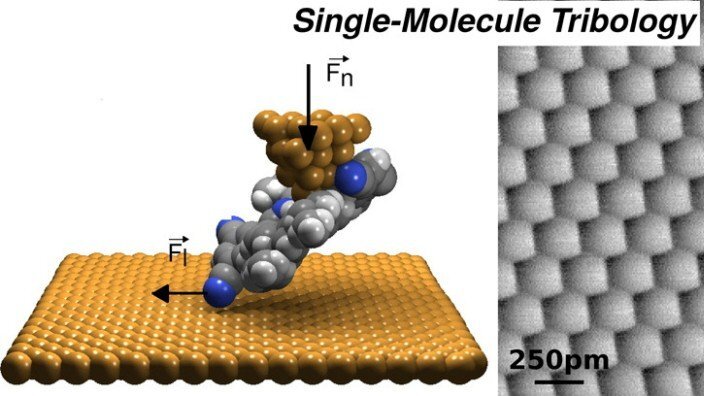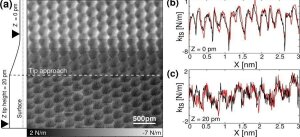
- Research
- Publication
Published:
Mechanical response during lateral displacement.
Image: MfM/ FSUThe low-temperature mechanical response of a single porphyrin molecule attached to the apex of an atomic force microscope (AFM) tip during vertical and lateral manipulations is studied. We find that approach-retraction cycles as well as surface scanning with the terminated tip result in atomic-scale friction patterns induced by the internal reorientations of the molecule. With a joint experimental and computational effort, we identify the dicyanophenyl side groups of the molecule interacting with the surface as the dominant factor determining the observed frictional behavior. To this end, we developed a generalized Prandtl-Tomlinson model parametrized using density functional theory calculations that includes the internal degrees of freedom of the side group with respect to the core and its interactions with the underlying surface. We demonstrate that the friction pattern results from the variations of the bond length and bond angles between the dicyanophenyl side group and the porphyrin backbone as well as those of the CN group facing the surface during the lateral and vertical motion of the AFM tip.
